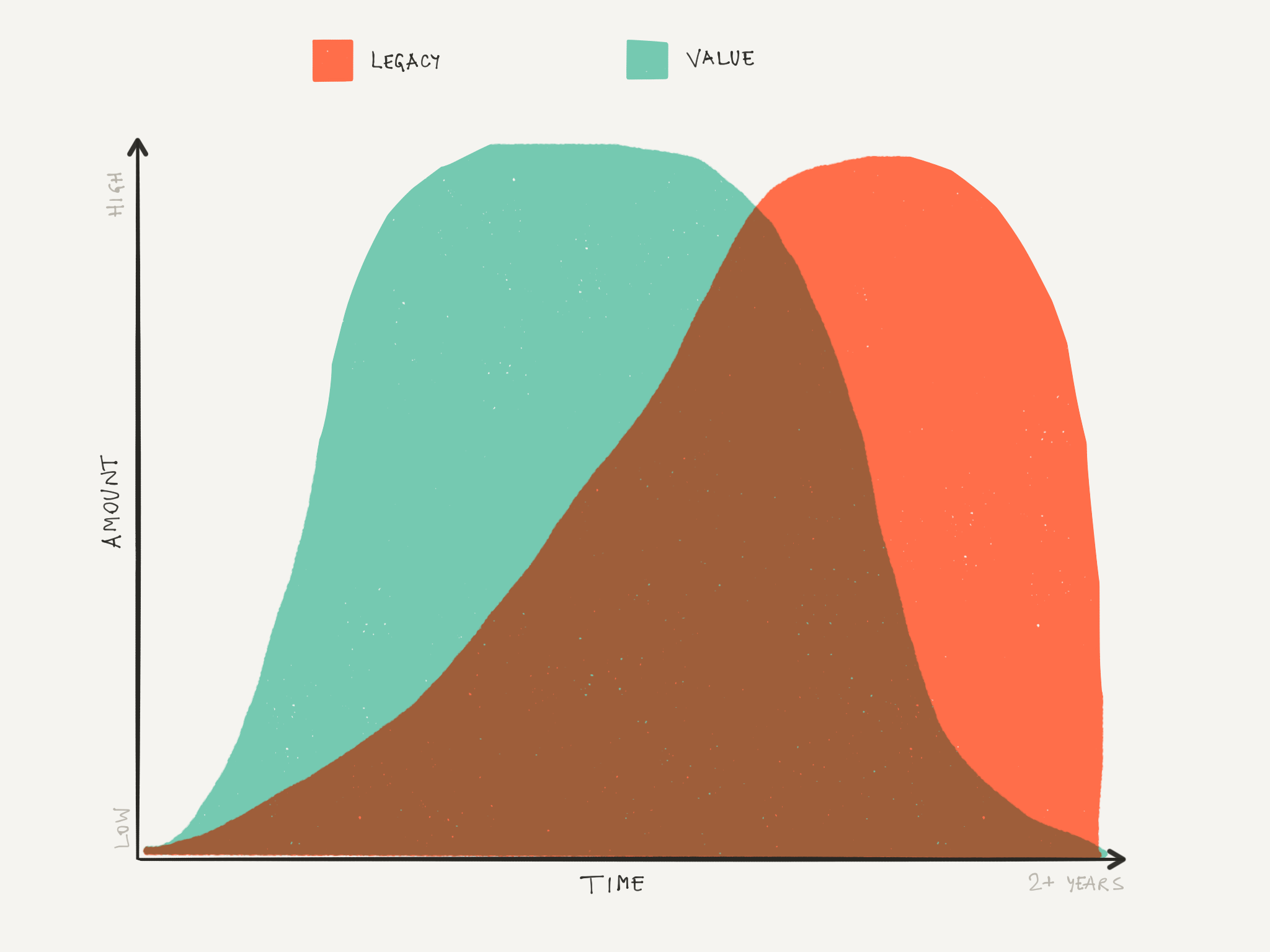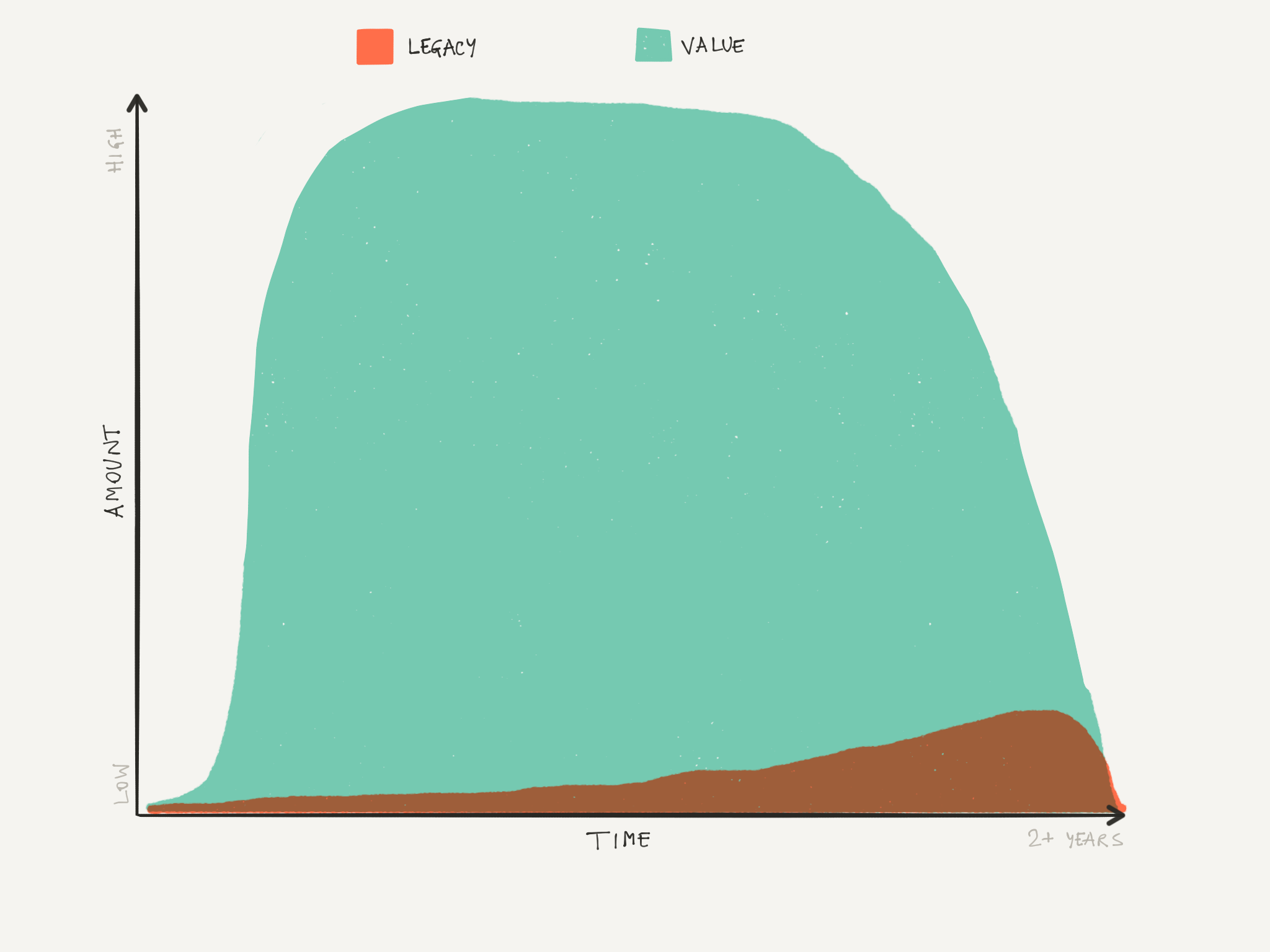How to minimise legacy IT with Design Thinking
Developers frequently approach their work trying to ensure their code is useful for long time. However, before then, designers have a massive role to play in this aspect of system design too.
2865 views
3 minute read

Overview
Many companies have to improve their UX on top of a legacy system.
This is often a big challenge creating many different roadblocks to (quick) success.
Technological capabilities of a system are core to enabling great quality UX.
A word about legacy
In this context by 'legacy' I mean 'an old and irrelevant system'.
Legacy is almost inevitable in IT world.
Within 2 years many systems can age so much that to end users they become completely useless.
If a system still works well, chances are its look and feel will age in that time.
You will most likely face a problem of what we might call 'perceived irrelevance' at that point.
The ultimate risk of legacy IT in business world
The reason why I wanted to write this article is to highlight the following point.
I've worked on so many projects where legacy had become almost 'the way of life'.

With lack of design approach this can become de facto 'reality' for a company.
All workers then tend to 'flock' around the legacy reality as the way of life.
This in turn becomes the norm and legacy thinking in turn breeds more legacy thinking.
Over time companies die due to not being able to innovate on top of what is a bad foundation for growth.
Companies also stop being able to attract good staff because their systems are .... irrelevant.
The legacy startup antipattern
The biggest antipattern in business can be creation of legacy from the start.
A new system, built in ad hoc manner, within weeks can become a legacy behemoth.
It's possible that before even releasing anything to the customer, you have huge legacy to deal with.

This situation comes about through lack of design thinking from the start.
It comes through cutting corners on design and, often, through 'lean startup' approach.
Often a time that 'lean startup' is actually an 'ad hoc startup'.
One that's killing itself before its even had a chance to see the proper light of the day.
How to deal with legacy?
Maintenance can play an important part in ensuring that systems don't become too dated.
But before that, with good design we can ensure that systems stay relevant for much longer.
My experience tells me that well designed IT systems can stay relevant for over a decade.
I've worked on handful of projects with design thinking applied throughout and from the start.
They are still going strong many years on, with minimal maintenance required.
We can call designing with legacy foresight a 'preventative design' approach.
Removal of legacy is a big aspect of design thinking and a big task to design out of older systems.
It's about lowering the amount of maintenance required on a system before it's even built.
The real value of good design
Legacy in design can be something that requires 'sunsetting' or preventing.
Ultimate goal for designers of new systems is to ensure legacy doesn't arise in the first place.
Either way, great designers know how to deal with legacy in a way that's most beneficial to the company.

It all boils down to value, good architecture, well defined processes and laser sharp focus at every point.
Conclusion
Designers exist in this world for a reason.
They are there to design demanded and easy to maintain products.
They are also there to ensure that legacy IT happens to a minimal extent or not at all wherever possible.
This is an important measure by which you could judge whether a designer is good or not.
Their ability to minimise IT demand, while maximising customer value.
So, if you are not careful and cutting corners, you could be creating a legacy system from the start!
Many startups take this as a 'given', that the first version of their system will need scrapping.
But it doesn't have to be like that.
Use good designers from the outset.
It will ensure success of your business for a long time, while minimising costs in the process.
Published on: 29 Oct 2015

